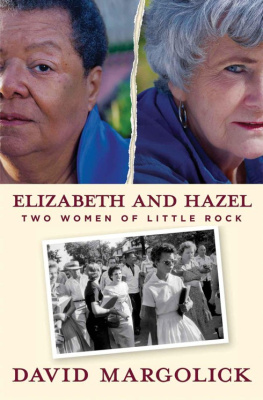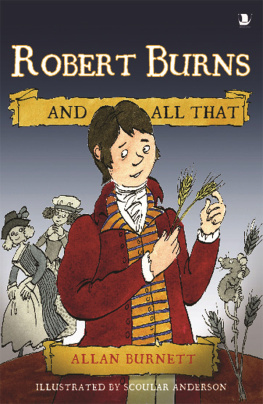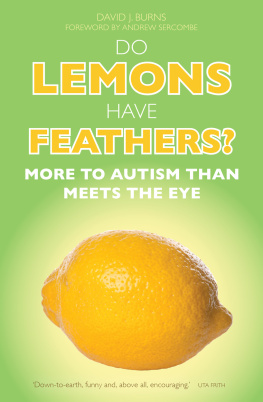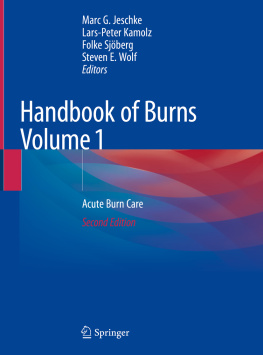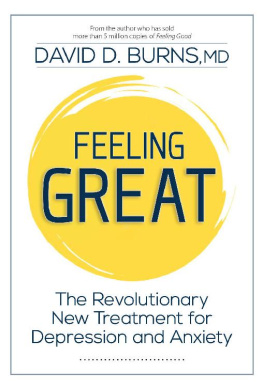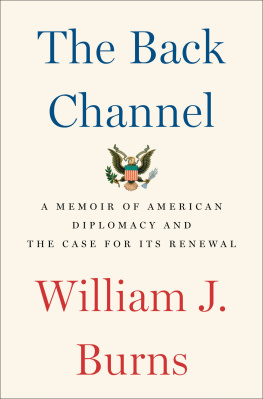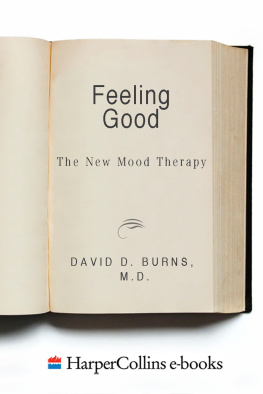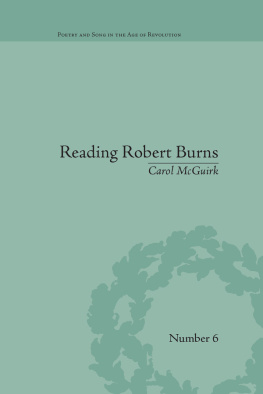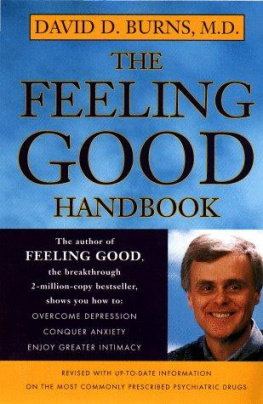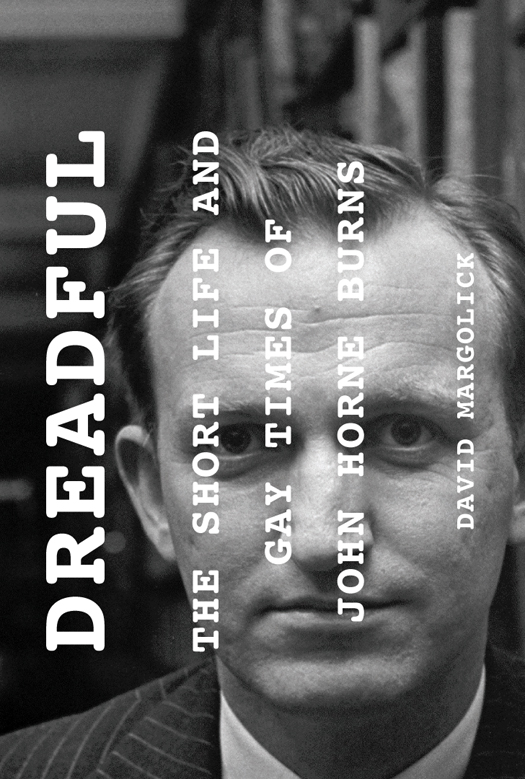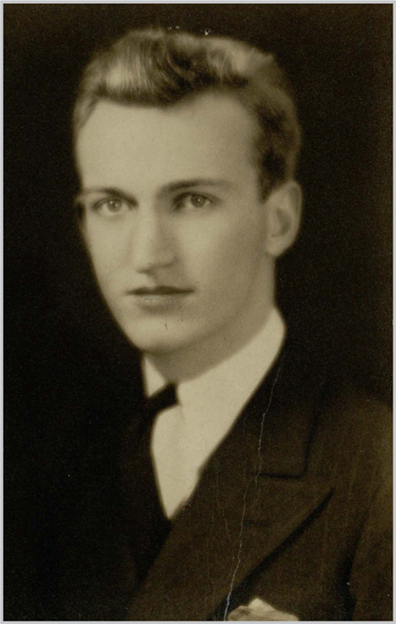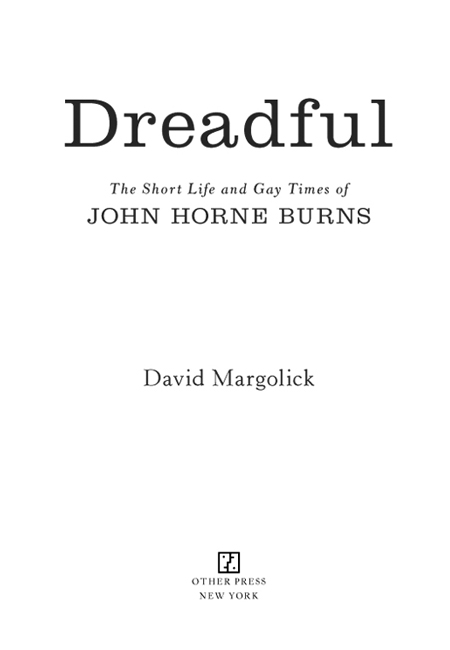ALSO BY DAVID MARGOLICK
Elizabeth and Hazel: Two Women of Little Rock (2011)
A Predator Priest (2011)
Beyond Glory: Joe Louis vs. Max Schmeling, and a World on the Brink (2006)
Strange Fruit: The Biography of a Song (2001)
At the Bar (1995)
Undue Influence: The Epic Battle for the Johnson & Johnson Fortune (1994)
Copyright 2013 David Margolick
Frontispiece: John Horne Burns, Harvard graduation photo, 1937
Production Editor: Yvonne E. Crdenas
All rights reserved. No part of this publication may be reproduced or transmitted in any form or by any means, electronic or mechanical, including photocopying, recording, or by any information storage and retrieval system, without written permission from Other Press LLC, except in the case of brief quotations in reviews for inclusion in a magazine, newspaper, or broadcast. For information write to Other Press LLC, 2 Park Avenue, 24th Floor, New York, NY 10016. Or visit our Web site: www.otherpress.com
The Library of Congress has cataloged the printed edition as follows:
Margolick, David.
Dreadful : the short life and gay times of John Horne Burns / by David Margolick.
pages cm
eISBN: 978-1-59051-572-3
1. Burns, John Horne, 19161953. 2. Authors, American20th centuryBiography. 3. Gay authorsUnited StatesBiography. I. Title.
PS3503.U6385Z75 2013
813.54dc23
[B]
2013002151
v3.1
To Mark Bassett
Contents
Acknowledgments
T his has been the most magical kind of booka volunteer, like a seed that survives the winter (or, in this case, forty-odd winters) and then sprouts and grows, seemingly on its own. Even volunteers can need nurturing to bear fruit, though, and I want to thank all those who fed and nourished this seedling.
First, there are the many former Loomis and Chaffee students and teachers, and members of the Loomis Chaffee community, who either provided me with their recollections of John Horne Burns or helped me find others with them. They include Jody Adams, Elihu Berman, Donald Cantor, John Stuart Cox, Sebastian DiMauro, W. Barrett Dower, Joel Graham, Jane Hazelton, Lucretia Hickok, John Howard, Albie Hurwit, Donald Kaplan, Tom Lehrer, Taylor Mead, James Munves, John Nichols, Lyman Page, Robert Louis Purinton, Richard Rifkind, Robert Rifkind, Judy Stevenson, and Guy Wiggins. Several others to whom I spokeDavid Brewer, David Haller, Glover Howe, Henry Krotzer, Russell Rhodes, and Michael Sudarskyhave since died, and I cherish my conversations with them. Loomis Chaffees highly capable and dedicated archivist, Karen Parson, was indispensable. So, too, was Seth Beebe, and I also want to thank Loomis Chaffees former head of school, Sheila Culbert. At Phillips Academy in Andover, Paige Roberts ferreted out some wonderfully useful material from the schools impressive archive, and Amy Morris was a source of encouragement and inspiration throughout.
Several people who seem forever to be helping me assisted with this book as well: David Smith of the New York Public Library; Charles Niles and Sean Noel at the Howard Gotlieb Archival Research Center at Boston University, and Jeff Roth, master of the New York Timess incomparable morgue. Also helpful were Heather Cole at the Houghton Library at Harvard; Anthony Nussmeier at the University of Indiana; Andrew Garsky and William Workman at the Harry Ransom Center of the University of Texas; Bill Hooper of the Time-Life archives; and the capable staffs at the Firestone Library at Princeton, the Rare Books & Manuscripts Library at Columbia, and the Biblioteca Nazionale in Florence.
Retracing Burnss path in Italy was made infinitely more rewarding, and edifying, by Francesco Durante, Gaia Pianigiani, Selene Salvi, Alessandra Serrano, Jeff Matthews, Larry Ray, Nino Delogu, Paolo Delogu, Gianfranco Vallini, Andrea Fiano, and Antonio Lombardi. Others helping me along the way include Victoria Barstow, Rhonda Chahine, Gerald Clarke, Brian Glanville, Sarah Gross, Bruce Hotchkiss, Andrew Huebner, Fred Kaplan, Betty Katkov, Eugenia Klein, Jack Larson, Ken Maley, Celia McGee, John Mitzel, Michael Morris, Donald Nuner, Reinhard Pauly, Jerry Rosco, Susan Searles, Jesse Sheidlower, Risa Sodi, Susan Spanier, Jay Trask, and Berny Wolff. Im also grateful to the folks at Bauman Rare Books for sharing an important Burns letter. Many, many people helped me pursue the innumerable dead ends that a project like this entails. I thank them for the peace of mind they gave me, for convincing mewhether justly or notthat I left few stones, or even pebbles, unturned.
Many people read, and improved, my manuscript: Michael Henry Adams, Daniel Blue, Christopher Bram, David Bray, Elizabeth Cohen, Phillip Isenberg, Charles Kaiser, Robert Loomis, John Loughery, Gertrude Margolick, Joseph Margolick, Michael James Moore, James Rugen, Michael Shnayerson, and Tim Zagat. Harvard Knowles, who endured plenty of my prose as an English teacher at Loomis, nonetheless agreed to read the manuscript, too; whether he believes it marked an improvement from my student work he (very graciously) didnt say.
I bless the day I met Judith Gurewich of Other Press. She embraced this book enthusiastically without reading a word of it, and at a time when it mattered greatly to me. Im grateful to her and all of her colleaguesincluding Paul Kozlowski, Sulay Hernandez, Yvonne E. Crdenas, Jessica Greer, Tynan Kogane, Iisha Stevens, Libby Riefler, Lauren Shekari, and Bill Foofor creating such a lovely home for my work. Thanks, too, to my copyeditor, Walter Havighurst, who was punctilious in multiple languages.
Id like, finally, to single out three people for special thanks.
I know it was not easy for him to revisit the life, and death, and afterlife, of his difficult older brother, but Thomas D. Burns, Esq., did so unflinchingly. He was also encouraging, gracious, good-humored, and patient with me. Working with him was one of the high points of this experience. I want also to thank two of his sisters, Constance Silverman and Anne Laskey, for their cooperation and goodwill.
Thirty years ago, Mark Bassett wrote his doctoral dissertation on Burns, an act of great courage in a homophobic time. Conditions thwarted him from circulating that thesis, let alone turning it into a book. But he held on to the material he had gathered and, in an act of extraordinary generosity, shared it all with me. Without thatwithout himthis book would have never come to be, which is why I have dedicated it to him.
Finally, Im thinking of the Loomis boy who, sometime in the fall of 1966, pulled me aside and bared to me the great secret of John Horne Burns and his scandalous book. It was he who really launched me on this project, though he could never have imagined how long it would take me to do it, nor that Id let so many eyewitnesses to the Burns storypeople like Mr. Grubbs, Mr. Howard, Mr. Stookins, Mr. (Charles) Pratt, Mr. Norris, and Mr. Fowles, all of them then still very much aliveslip through my fingers. I would thank this boy more personallyif only I could remember who he was.
1
T he old library at the Loomis School, off the grand entrance to Founders Hall, was a cramped and uninviting place, with giant tables, cork floors, and books shoehorned into caged stacks in a back room. Students would go in there as much to kill time and rile up the famously stern and schoolmarmish librarian, Winifred Adams, as to study or read.



